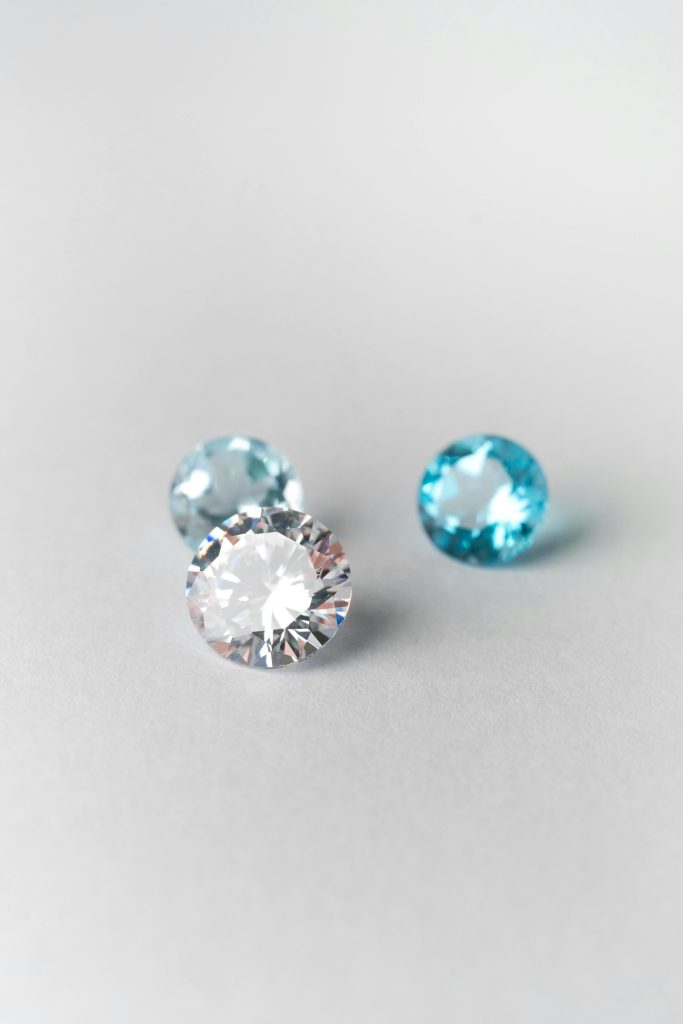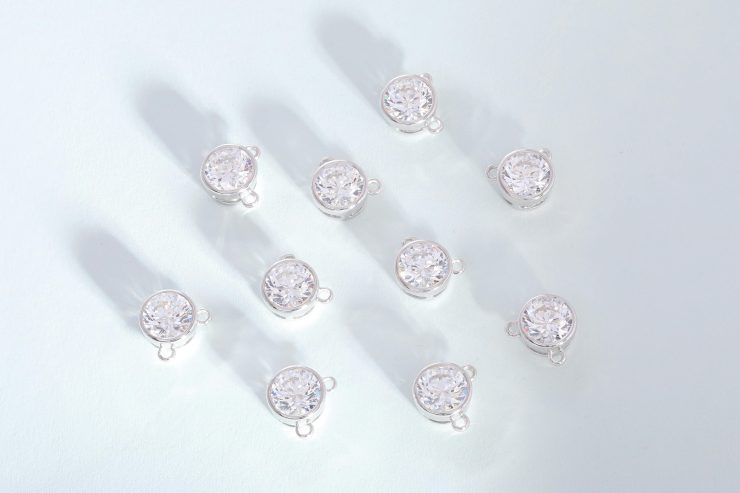Introduction: A Growing Interest in Colored Lab Diamonds
In recent years, lab-grown diamonds have surged in popularity, not only for their ethical and environmental benefits but also for their affordability and accessibility. Among these, colored lab diamonds have become an especially attractive option for consumers seeking uniqueness, personalization, and a bold statement. Unlike their naturally mined counterparts, which are rare and often prohibitively expensive in fancy colors like blue, pink, yellow, or green, colored lab diamonds can be created with greater precision and consistency. This has opened the door to wider availability and creative opportunities in jewelry design. However, as with any investment or significant purchase, buyers must carefully weigh the benefits against potential downsides. From resale value to authenticity concerns, and from ethical advantages to aesthetic preferences, the decision to buy a colored lab diamond is multifaceted. This article will explore the pros and cons in detail, offering readers a comprehensive guide to making an informed choice when considering these vibrant, lab-grown gems.

Pro: Ethical Sourcing and Environmental Responsibility
One of the most significant advantages of purchasing colored lab diamonds is their ethical sourcing. Unlike mined diamonds, which may originate from conflict zones or involve exploitative labor practices, lab-grown diamonds are produced in controlled environments with traceable origins. This eliminates concerns about “blood diamonds” and ensures a more transparent supply chain. Moreover, the environmental impact of lab diamond production is generally less severe than traditional mining, which can cause deforestation, soil erosion, water contamination, and biodiversity loss. While lab-grown diamonds are not entirely without environmental footprint—since they require high temperatures and energy input—their production typically involves fewer harmful processes. Some manufacturers even use renewable energy sources to reduce their carbon emissions further. For socially conscious consumers who value sustainability and ethical business practices, colored lab diamonds represent a responsible alternative to mined stones. This ethical appeal is often a decisive factor in purchase decisions, especially among younger buyers who prioritize values alongside aesthetics.
Pro: Lower Cost and Greater Accessibility
Colored lab diamonds are considerably more affordable than their natural counterparts, especially in fancy color categories such as pink, blue, and green. Naturally colored diamonds are exceedingly rare, and their scarcity drives up prices significantly—sometimes reaching into the hundreds of thousands or even millions of dollars per carat. In contrast, lab-grown colored diamonds can offer the same visual appeal at a fraction of the cost. This affordability makes them accessible to a much broader audience, allowing more people to purchase distinctive and vibrant stones that would otherwise be financially out of reach. Additionally, buyers can typically afford larger or higher-quality stones within the same budget range when choosing lab diamonds. This price advantage also enables more creative freedom in custom jewelry designs, as budget constraints are less restrictive. Whether for an engagement ring, anniversary gift, or fashion accessory, colored lab diamonds offer excellent value and design flexibility for consumers seeking elegance without overspending.
Pro: Consistency and Customization in Color
Another benefit of lab-grown colored diamonds is the ability to achieve consistent, high-quality coloration. In nature, the formation of colored diamonds is the result of rare geological conditions, such as the presence of specific trace elements or radiation exposure. As a result, natural colored diamonds can vary widely in hue, saturation, and clarity, often making it difficult to find a perfectly matching pair or to attain a specific desired shade. In contrast, lab technology allows for precise control over the diamond’s growth environment, leading to more predictable and reproducible colors. This is especially advantageous for buyers seeking specific tones for design coordination or personal preference—such as a deep royal blue, a vibrant canary yellow, or a soft pastel pink. Moreover, certain processes like Chemical Vapor Deposition (CVD) or High Pressure High Temperature (HPHT) allow scientists to introduce or enhance color during or after diamond formation. This level of customization is nearly impossible with natural diamonds and is a unique strength of the lab-grown market.
Con: Limited Long-Term Investment Value
Despite their aesthetic and ethical appeal, colored lab diamonds currently lack the long-term investment potential associated with natural diamonds. While the value of rare, naturally colored diamonds tends to appreciate over time due to their scarcity and high demand, lab-grown diamonds do not share the same economic dynamics. The supply of lab diamonds is increasing as technology improves and more companies enter the market, which may place downward pressure on prices. As a result, buyers should not expect to recoup their costs or realize a profit from future resale. In fact, the resale market for lab diamonds is still developing, and secondary market prices are typically lower than the original purchase price. For collectors or investors seeking appreciation in value, natural colored diamonds remain the superior choice. Therefore, it’s important for consumers to view lab-grown colored diamonds primarily as a fashion or ethical choice rather than a financial asset. While this may not deter all buyers, it is a critical consideration for those looking at diamonds as a store of value.
Con: Perception and Prestige Factors
Another potential downside to colored lab diamonds is the lingering perception gap among certain consumers and industry stakeholders. Despite growing acceptance and awareness, some people still view lab-grown diamonds—regardless of their visual and chemical equivalence to natural diamonds—as “less authentic” or “artificial.” This bias can affect not only how a diamond is perceived socially but also how it is valued by appraisers, insurers, and future buyers. In luxury markets, prestige and exclusivity often carry as much weight as beauty or quality, and natural colored diamonds continue to command a higher level of status and admiration. For buyers who prioritize societal recognition, family heirloom value, or brand-name prestige, lab-grown stones may not fulfill all expectations. In some circles, the term “lab-grown” may even carry a stigma, despite the stone’s ethical advantages and identical physical structure. Buyers must decide whether personal values, such as sustainability and affordability, outweigh any potential concerns about perception or status.

Pro: Technological Innovation and Quality Assurance
One of the notable strengths of lab-grown colored diamonds is the advanced technology used in their creation, which allows for consistent quality assurance. Through processes like High Pressure High Temperature (HPHT) and Chemical Vapor Deposition (CVD), scientists can grow diamonds that are virtually indistinguishable from natural ones in terms of chemical composition and physical properties. These techniques also allow precise control over color, clarity, and size, significantly reducing the unpredictability that often accompanies natural stones. Additionally, many reputable labs provide certification and grading reports for lab diamonds, offering transparency and quality verification for buyers. Organizations such as the International Gemological Institute (IGI) and the Gemological Institute of America (GIA) have adapted to grade lab-grown diamonds with the same rigor as natural ones, though with distinctions noted. Buyers can rest assured that what they purchase has undergone professional evaluation, providing peace of mind and assurance of quality. This technological reliability and traceability are especially attractive to consumers wary of counterfeit or misrepresented gems in the marketplace.
Con: Potential for Misrepresentation and Consumer Confusion
While reputable sellers are transparent about the origins of lab-grown diamonds, the growing market has led to some consumer confusion and even intentional misrepresentation. Lab-grown colored diamonds are virtually identical to natural stones to the naked eye and require specialized equipment to distinguish them. In unregulated markets or among unscrupulous vendors, there is a risk that lab diamonds may be passed off as natural, particularly to uninformed buyers. This can lead to price inflation, misinformation, and erosion of trust. Moreover, even well-intentioned buyers may struggle to understand the differences between lab-grown, color-treated, synthetic, or simulant diamonds, all of which can look similar but differ in authenticity, value, and composition. To avoid these pitfalls, consumers must educate themselves thoroughly and purchase only from reputable retailers who provide full disclosure and lab certifications. The onus is on the buyer to ask questions and verify documentation, which can be daunting for first-time purchasers unfamiliar with gemological standards and terminology.
Pro: Wide Range of Color Options
Colored lab diamonds offer an incredibly diverse palette that far exceeds what is commonly available in nature. While natural fancy colored diamonds tend to be available in limited shades due to their geological formation constraints, lab-grown diamonds can be engineered to exhibit a much broader range of hues, including rare and exotic tones. From deep ocean blues to vivid purples and fiery oranges, the possibilities are nearly endless. This versatility is especially appealing for jewelry designers and individual buyers looking to express personal style or mark meaningful occasions with symbolic colors. Some buyers may choose specific colors based on birthstones, cultural significance, or simply aesthetic preference. For instance, a lab-grown emerald green diamond may be chosen for a May birthstone alternative, or a romantic lavender diamond for a unique engagement ring. This ability to personalize with precision makes colored lab diamonds an excellent choice for bespoke, meaningful pieces, expanding creative potential beyond what is feasible with mined stones alone.
Con: Less Historical and Rarity Value
Natural colored diamonds carry a deep historical and cultural resonance that lab-grown stones cannot replicate. The centuries-old allure of rare gems like the Hope Diamond or the Pink Star stems not only from their beauty but from their natural rarity and storied provenance. This intrinsic value, rooted in scarcity and natural origin, contributes to their enduring desirability and collector interest. Lab-grown colored diamonds, no matter how visually stunning, do not possess the same heritage or mystique. As technological capability continues to evolve and colored lab diamonds become more commonplace, their novelty may diminish over time. For buyers who place value on legacy, tradition, and the historical significance of gemstones, lab diamonds may feel less meaningful. Additionally, in high-end auction houses and among seasoned collectors, lab-grown diamonds have not yet achieved widespread recognition or demand, which further limits their prestige and perceived significance in the luxury market.
Final Considerations for Buyers
When evaluating whether to purchase a colored lab diamond, buyers must consider their priorities, values, and intended use. If ethical sourcing, environmental responsibility, affordability, and personalization are top concerns, then lab-grown colored diamonds offer compelling advantages. They provide access to rare and beautiful colors at accessible prices, allow for bespoke designs, and are free from the controversies associated with diamond mining. However, for those interested in long-term investment, resale value, traditional luxury status, or historical provenance, natural diamonds still hold a distinct edge. The decision is not strictly binary—it depends on the individual’s purpose for buying the diamond, whether it’s emotional, practical, or financial. Educated consumers who understand the strengths and limitations of lab-grown colored diamonds will be better equipped to make satisfying purchases. Choosing a trustworthy jeweler, insisting on proper certification, and being clear about what matters most personally can help ensure a rewarding and transparent buying experience.